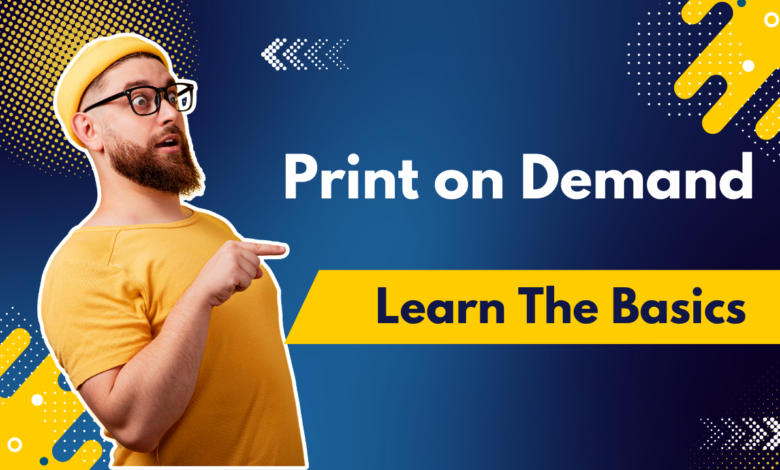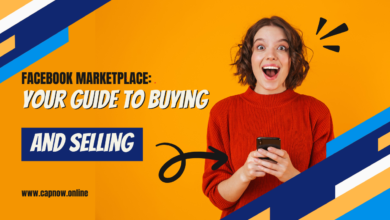E-commerce SolutionsSocial Media Marketing
The Ultimate Guide to Print-on-Demand

advertisement
Print-on-Demand (POD) is among the most profitable and user-friendly web-based business model. With the market for custom printing projected to reach $49.9 billion in 2030 The need for unique and personalized products will continue to increase. Entrepreneurs can develop and sell products that are custom-designed without having to manage production, inventory or even shipping. This complete guide explains the print-on demand business model and market trends, the best platforms along with strategies to ensure your chances of success.
What is Print-on-Demand?
Print-on Demand is an eCommerce fulfillment model which allows products to be printed and shipped after the customer has placed an order. This means that there is no need for inventory upfront and makes it an risk-free business.How Print-on-Demand Works
- A seller can upload custom designs to a platform.
- The customer makes an order with the store's website.
- The POD printer prints the design on the product you choose.
- The seller directs the shipment of the product to the buyer.
- The seller makes an income by dividing and the cost of retail and the the base manufacturing cost.
Market Growth and Statistics
- The worldwide market for printing on demand is predicted to grow at an CAGR 26.1 percent from 2023 until 2030.
- Custom-designed apparel is the most popular and is the most popular, with sweatshirts, hoodies and sweatshirts accounting for more than 50% of the total sales.
- The United States leads the POD market with more than 10 billion dollars in annual sales.
- Eco-friendly PODs are becoming more popular and have seen an increase of 35% in the demand for sustainable products.
Pros and Cons of Print-on-Demand
Advantages
- There are no upfront costs for inventory Product are only produced when they are ordered.
- Very low startup costs It only requires the design tool and an online platform.
- Scalability Unlimitable product possibilities without storage restrictions.
- Fulfillment without hands - Providers manage packaging, printing, and shipping.
- World-wide reach Sell to clients around the world.
Challenges
- Low profit margins The cost of production is greater than manufacturing in bulk.
- limited customization Printing options are contingent on the capabilities of the printer.
- More time to ship Orders can require seven to fourteen days to arrive at customers.
- Qualitative control Sellers cannot control the items prior to shipping.
Best Print-on-Demand Platforms in 2025
Selecting the best POD platform is essential to the success of your business. These are the top POD platforms:| Platform | Best For | Key Features |
|---|---|---|
| Printful | High-quality printing and customizing | A wide range of products including custom branding, and integrations to Shopify & Etsy |
| Printify | Cost-effective & multiple supplier options | More than 300 variations of products Multiple fulfillment partners around the world |
| Teespring (Spring) | Sales on Facebook and YouTube | Integrated with TikTok, YouTube, Instagram and Facebook |
| Redbubble | Marketplace selling | A large organic client base Ideal for independent artists |
| SPOD (Spreadshirt POD) | Fastest fulfillment times | 48-hour average shipping, high-profit margins |
How to Start a Print-on-Demand Business
Step 1: Choose a Niche
Finding the most lucrative and distinctive field is crucial to your success.Popular POD Niches in 2025:
- Sustainable and eco-friendly clothing Organic cotton t-shirts and bags.
- Pet love merchandise Pet portraits that are custom-designed on the hoodies and mugs.
- Gaming and anime designs posters and T-shirts to gaming groups.
- Positive and mental health themes Motivational quotes and slogans on posters and hoodies.
- Customized gifts Wedding and birthday presents.
Step 2: Create Winning Designs
Design is essential in selling POD items.Best Tools for Creating Designs:
- Canva - user-friendly with templates for free.
- Adobe Illustrator & Photoshop Design software with advanced features.
- Procreate Perfect for hand-drawn and digital designs.
Tips for High-Converting Designs:
- Utilize bold, minimalist styles that make your products stand out.
- Keep up with the latest trends in design through platforms like Pinterest or Etsy.
- Test various color variations to determine their impact.
- Be sure to upload high-resolution photos (300 DPI) for prints that are of good quality.
Step 3: Choose the Right Products
The choice of the right product can affect profits and the level of engagement.Best-Selling Print-on-Demand Products:
- T-shirts and Hoodies Classic high-demand items.
- Mugs & Water Bottles - Popular for gifts.
- Phone Cases - Trending among Gen Z audiences.
- Tote Bags and Backpacks Fashionable and sustainable.
- Posters & Canvas Prints - Great for home decor enthusiasts.
Step 4: Set Up an Online Store
An online store that is optimized improves customer confidence and sales.Best E-Commerce Platforms for POD:
- Shopify is the best choice for a store that is standalone and has complete control.
- Etsy is great for hand-made and unique designs.
- WooCommerce is ideal to WordPress users.
- Amazon Merch for Purchase Make use of Amazon's massive customer base.
Step 5: Price Your Products for Maximum Profit
Pricing strategy affects the revenue and competitiveness. Formula for Pricing: Retail Price = Production Cost + Profit Margin + Platform Fees- Standard profit margins are between 30 to 50 percent.
- Think about making discounts and bundles to boost the value of your order.
Marketing Strategies for Print-on-Demand Success
1. SEO Optimization for More Organic Traffic
- Utilize words with high intent such as "custom t-shirts online" or "best print-on-demand hoodies."
- Write thorough product descriptions that include keywords that are SEO-friendly.
- Optimize images using alt-text and formats that load fast.
2. Leverage Social Media Marketing
- Make use of Facebook and Instagram to promote your business using images.
- Promote your business on TikTok by promoting short videos and current trends.
- Join forces with influential people to promote your products.
3. Run Paid Advertising Campaigns
- Make use of the Facebook or Instagram advertisements to target your audience's reach.
- Put money into the Google Shopping ads to attract buyers who are interested in buying.
- Try to retarget ads to help convert abandoned carts.
4. Offer Limited-Time Promotions and Discounts
- Inspire urgency by offering special-occasion discounts.
- Make use of seasonal sales such as Black Friday and Christmas sales.
- The offer is FREE shipping to boost conversion rates.



